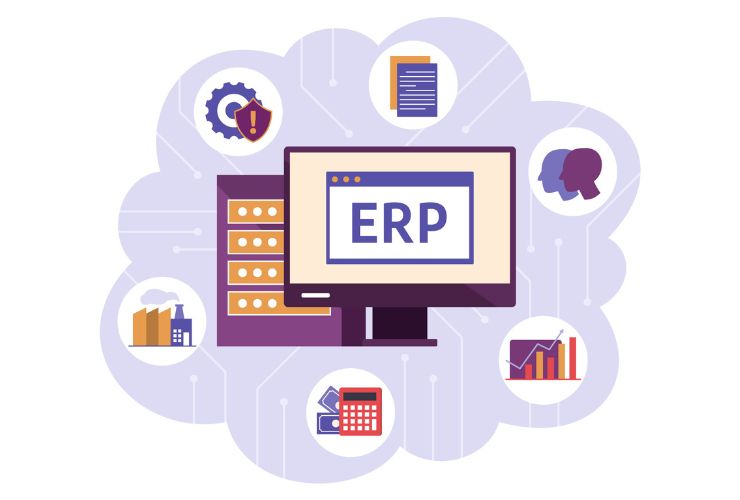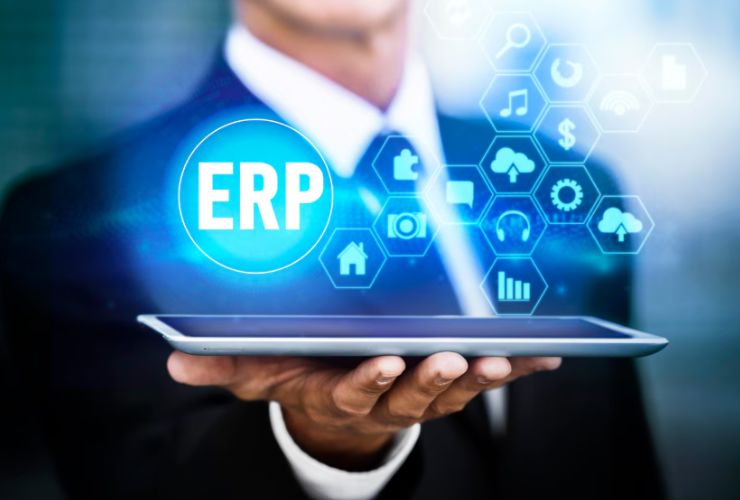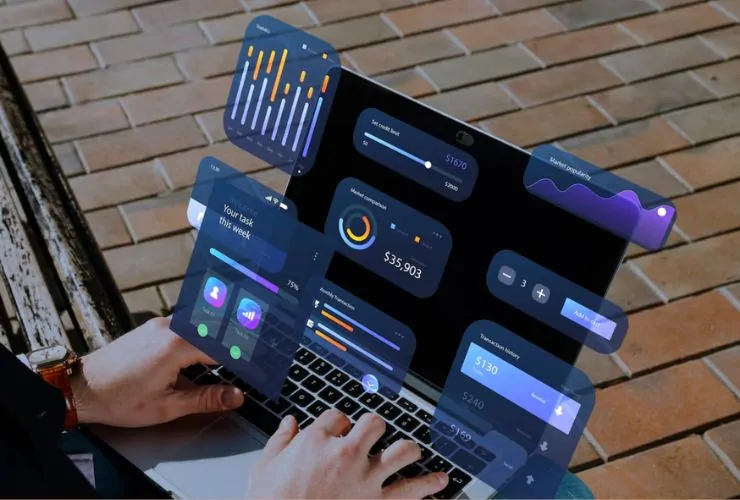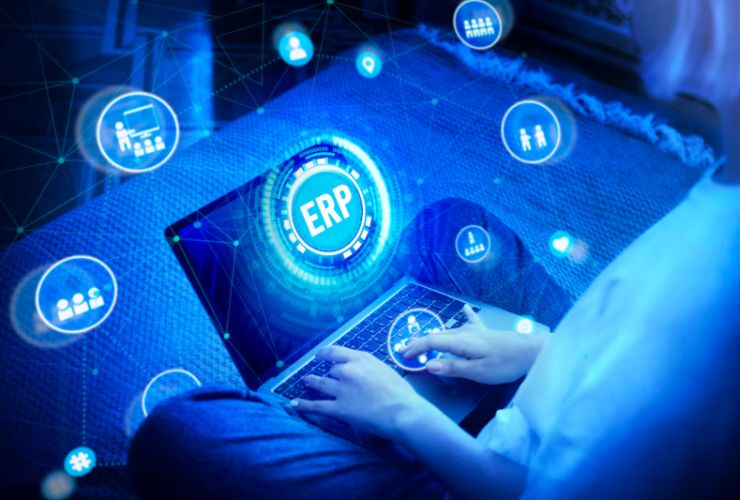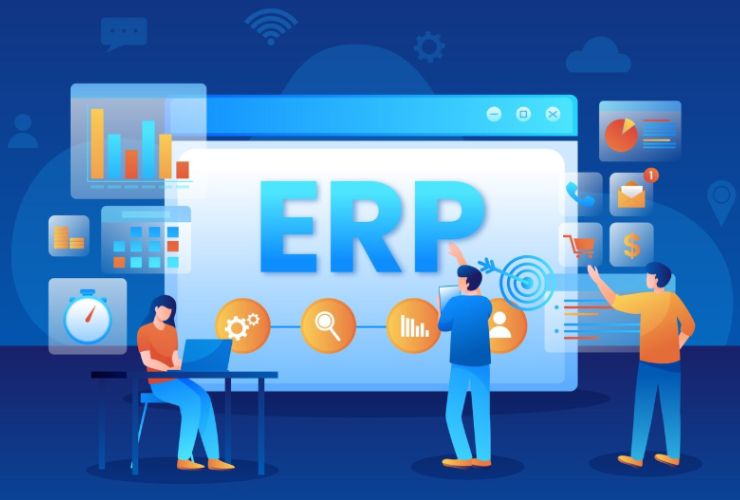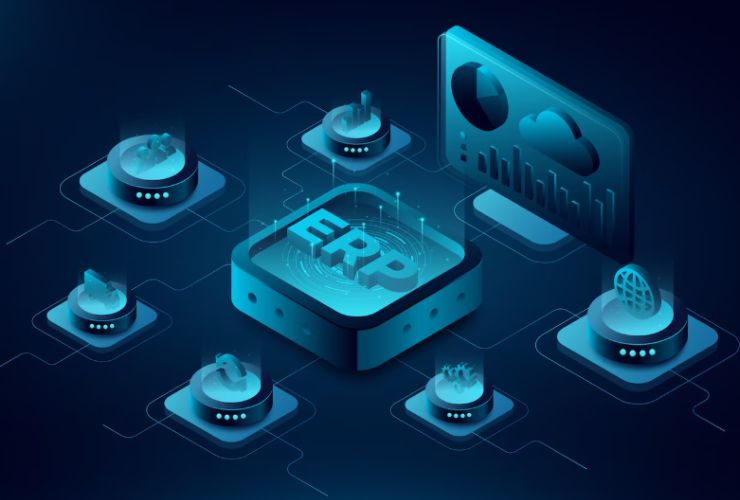Companies nowadays rely on an enormous variety of software systems for day-to-day working. Ranging from customer relationship management (CRM) tools to accounting software, supply chain systems, human resource applications, and e-commerce sites — each software is critical in running the business.
Behind such operations is ERP (Enterprise Resource Planning) software, a business’s nervous system that consolidates and coordinates core business processes in one place. To have an ERP system, however, is not enough. To gain maximum value, an ERP must seamlessly integrate with all the other systems a business uses. Such is the purpose of ERP integration.
What is ERP Integration?
ERP integration refers to the process of integrating your ERP system with other computer programs in your IT environment for automatic, uniform, and real-time data exchange. The concept is to create an integrated digital environment where all systems communicate with one another and automatically share data across departments and applications.
For example, if a customer places an order for a product on a website, ERP integration automatically updates the inventory, alerts the finance team to issue an invoice, and sends the shipping details to the logistics partner without any human intervention All this interconnection reduces silos and provides an end-to-end seamless visibility of business processes.
ERP integration is not necessarily of only one type; it generally integrates CRMs, e-commerce websites, POS, logistics, marketing automation tools, and even business intelligence solutions.
Why ERP Integration is Required?
An ERP system processes data across business functions, but it reaches its full potential when it integrates with external systems. Without integration, organizations face the following issues:
- Manual data entry across different platforms, which is both time-consuming and prone to errors
- Inconsistent data across departments, leading to inefficiency and confusion
- No real-time analytics, affecting responsiveness and decision-making
- Disconnected workflows and poor team collaboration
ERP integration solves these issues by providing a single, unified data environment. ERP integration enables organizations to work more efficiently, grow faster, and provide quality services to customers.
Top Benefits of ERP Integration
ERP integration removes redundant entry of the same data and automates manual processes, which save time as well as man cost. It facilitates teams to engage in higher-value activities instead of repetitive manual activities.
Real-Time Data Synchronization
Integrated systems ensure updates created in one application are reflected across all others in real time. For example, an update in inventory level as a result of sales order is updated within warehouse,
along with procurement systems, instantly.
Informed Decision-Making
Leaders are empowered to make timely, well-informed decisions by having access to good, up-to-date information from multiple sources. Dashboards can provide insight in real-time, improving responsiveness and agility.
Reduction of Error
Manual data entry is prone to errors. ERP integration ensures data consistency between systems, significantly minimizing human error risk as well as data quality improvement.
Customer Satisfaction
Automated order processing, accurate levels of inventory, and effective customer communication result in improved experiences. Integrated customer data also means more tailored support and service.
ERP Integration Use Cases in Common Use
ERP integration can be customized based on the business operations and needs of a company. Some of the most typical cases are as follows:
- CRM and Sales Tools: Integrating Salesforce, HubSpot, or Zoho CRM with ERP provides sales forces with real-time customers’ purchase history, invoice status, and delivery alerts.
- E-commerce Platforms: Shopify, WooCommerce, or Magento integration with ERP allows for inventory, product, and order fulfillment synchronization, thus enabling front-end and back-end processes to be seamless.
- Accounting and Finance Software: Synchronization of ERP with software like QuickBooks, Xero, or NetSuite enables auto-reporting of finances, budgets, and cash flow.
- Supply Chain and Logistics Systems: Synchronization with shipping carriers and warehouse management systems enables timely shipments, real-time tracking, and efficient inventory management.
- HR and Payroll Solutions: Synchronization with applications like ADP or BambooHR helps in organizing employee data, payroll processing, leaves, and compliance in the ERP system.
How ERP Integration is Done
The process of ERP integration differs depending on a variety of factors such as company size, complexity of existing systems, technical expertise, and budget. Below are the most common methods:
Point-to-Point Integrations
They involve setting direct connections between systems. Though they work well for small setups with minimal applications, they turn out to be cumbersome and difficult to manage as the number of systems rises.
Middleware Solutions
Middleware acts as a translator for systems, allowing data exchange and mapping. Applications like MuleSoft, Dell Boomi, or Talend are usually applied to manage complex integrations with multiple endpoints.
Custom APIs (Application Programming Interfaces)
Custom APIs can be designed by developers in accordance with custom requirements of an organization. Even though this is flexible, it has high technical complexity and maintenance needs.
iPaaS (Integration Platform as a Service)
Cloud-based solutions offer reusable and scalable integration frameworks. iPaaS software like Workato, Celigo, and Jitterbit have been increasing in popularity due to ease of use and low-code capabilities.
Major ERP Integration Challenges
ERP integration is heavily reliant on vast value, though not without its issues. Organizations must prepare for the following issues:
- Data Mapping and Compatibility: Data formats and structures being mapped between systems are complex, especially with legacy systems.
- Security and Compliance: As sensitive customer and financial data flows between systems, businesses must implement security controls like encryption, access control, and audit logs.
- Change Management: Integration projects may occasionally require adjustments in workflows, processes, and user behavior, where internal alignment and training are important.
- Scalability and Flexibility: The integration solution should be able to adapt as your business evolves, without requiring complete overhauls.
- Testing and Maintenance: Integrations, once deployed, need ongoing monitoring, updates, and troubleshooting to ensure reliability and performance.
ERP integration is a foundation of digital transformation. It brings disparate systems together, automates processes, maximizes visibility, and positions organizations for agility and growth. Whether you are a small business simplifying simple operations or a big business running global supply chains, ERP integration can make your ecosystem easier and increase your competitive edge.
In the more integrated world of today, the success of your systems’ being able to talk to each other is no longer a luxury — it’s essential. Investing in ERP integration is investing in operational greatness, better customer service, and eventual triumph.

